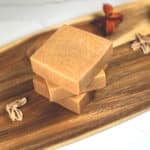
My Turmeric Soap Recipe
Here's how to make turmeric soap that's all-natural and what it should really look like. What tumeric lacks in strength of pigment, it definitely makes up for it with amazing, skin-loving benefits.
Print
Pin
Yield (adjustable): 5 bars
Ingredients:
Oils & Fats (All Ingredients are for a 1/2 Loaf Mold)
- 235 grams (8.29 oz) Olive Oil
- 135 grams (4.76 oz) Coconut Oil
- 30 grams (1.06 oz) Castor Oil
- 50 grams (1.76 oz) Shea Butter
Lye Solution
- 129 grams (4.55 oz) Distilled Water
- 64.5 grams (2.28 oz) Soapmaking Lye Crystals
Pigments & Fragrances
- 10 grams (0.35 oz) 5-Fold Orange Essential Oil
- 5 grams (0.18 oz) May Chang Essential Oil Litsea Cubeba
- 4 tsp (4 tsp) Turmeric Powdered
Equipment:
- Silicone Soap Mold (Note: Ingredients are for 1/2 Loaf Mold)
Instructions:
Initial Measurements and Prep
- (Please Note: Ingredients are for a 1/2 Loaf Mold)Weigh the essential oils into a small glass container. The easiest way to do this is to place the container onto the scales and press the tare button. This will bring the scales back to zero so you are not weighing the container.Once weighed set it aside for later use. Pre-measuring the oils will save time and simplify the process when it's time to add them.10 grams 5-Fold Orange Essential Oil, 5 grams May Chang Essential Oil
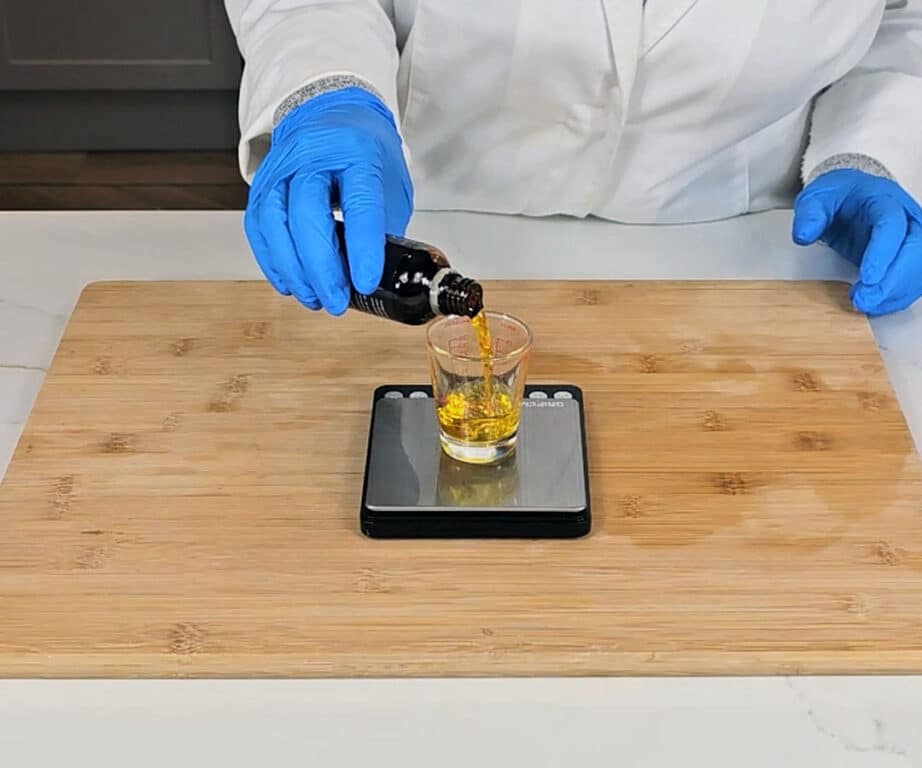
- Make sure you are making the soap in a well-ventilated area. Put on your gloves and eye protection, your mask, apron, and long rubber gloves.
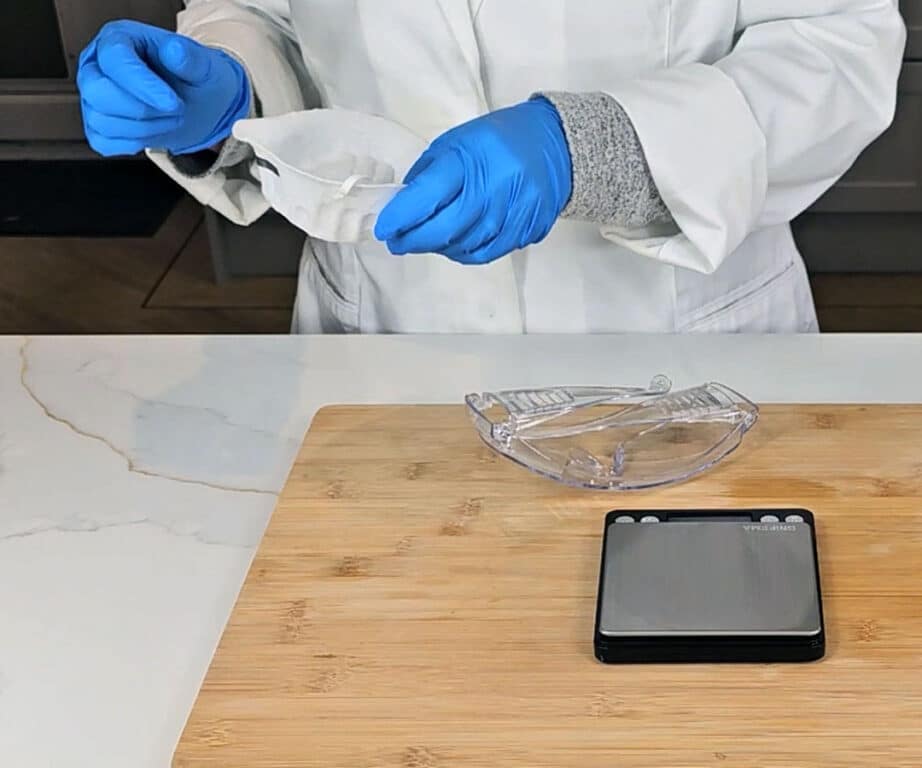
Making The Lye Solution
- Weigh the lye crystals into a clean plastic heat-safe container.64.5 grams Soapmaking Lye
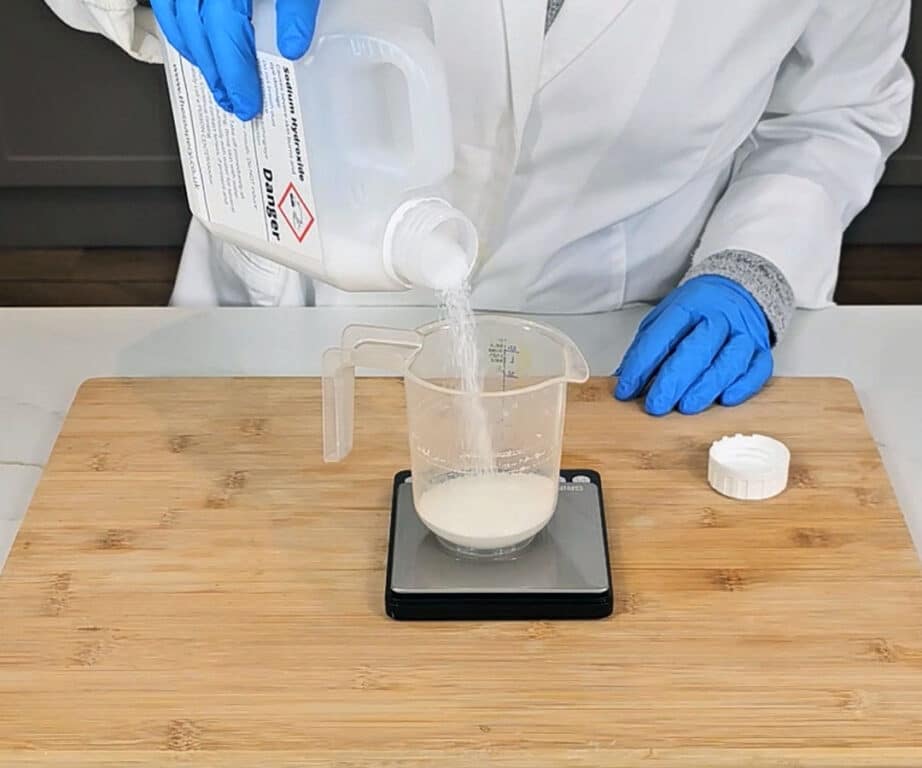
- In a separate container, weigh your distilled water. Use another clean plastic heat-safe container. Never use a glass container as this is going to be holding the lye water. Lye can weaken glass so it can easily break.129 grams Distilled Water
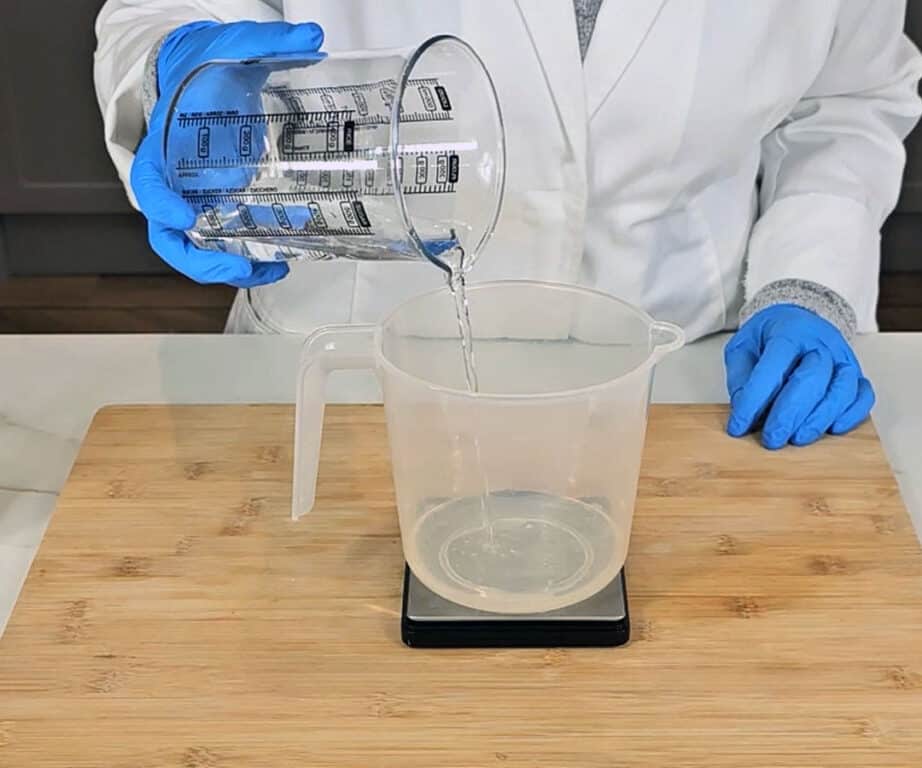
- When you’re ready, carefully pour your lye crystals into the water. Never pour the water into the lye as it can create a sudden intense reaction that can cause splashing. Then, start stirring it. Although you are wearing a mask, we still recommend turning your head and leaning away while stirring, so you do not breathe any of the fumes. As the water and lye mix this will result in a chemical reaction, and the lye water will increase in temperature and release toxic fumes.Stir until the lye crystals have dissolved and the water looks fairly clear. Now place it to one side, somewhere well-ventilated but safe so that it will not be knocked over. Allow to cool as we get on with our other steps.
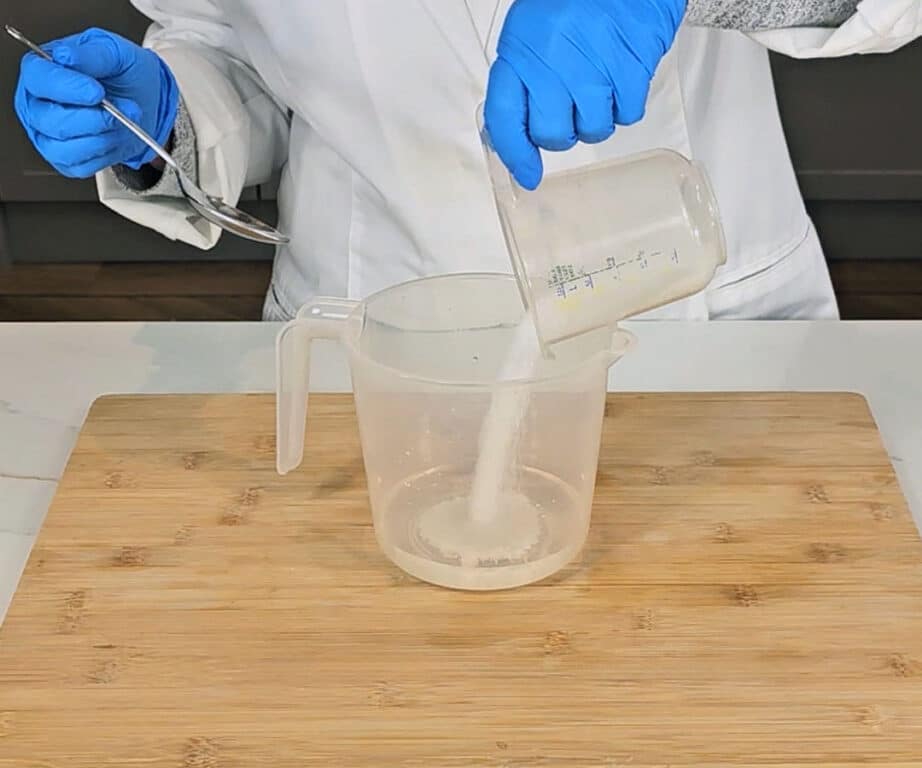
Mixing & Melting Oils
- Weigh your coconut oil and shea butter into a good-sized heat proof container. Melt the oil and butter together in a microwave, using 30-second bursts.135 grams Coconut Oil, 50 grams Shea Butter
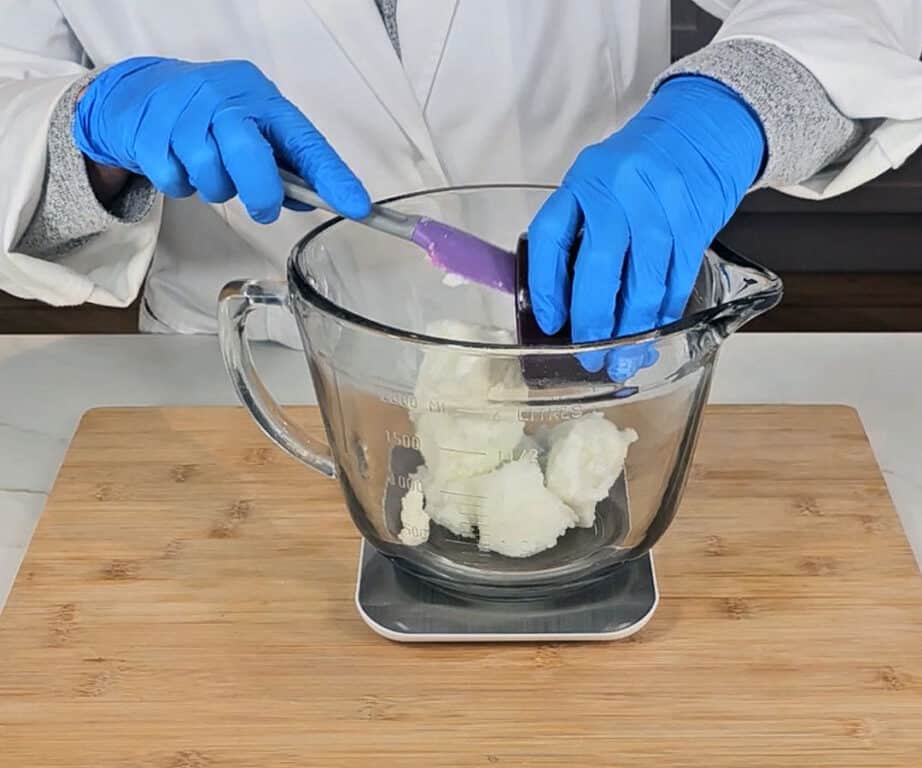
- Once the coconut oil and butter have melted, add the olive oil and castor oil, giving it a quick stir.235 grams Olive Oil, 30 grams Castor Oil
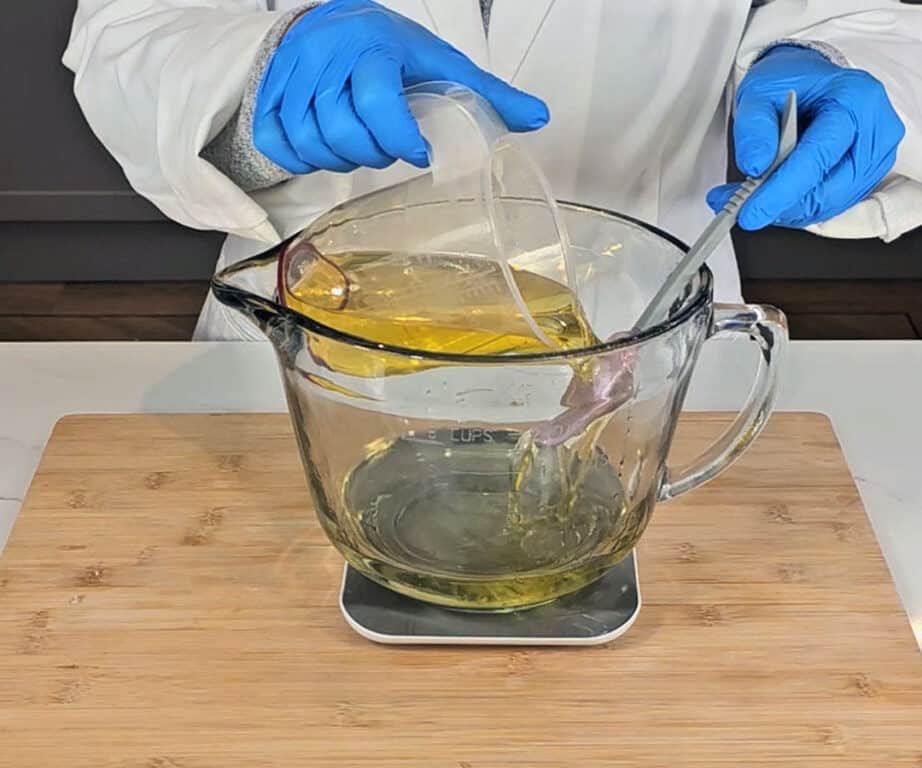
Making The Soap Batter
- Now it’s time to balance our oils and lye water. Check the temperature of the oils and the lye water. You can do this with a temperature laser gun or a jam thermometer. We want them both to fall between 120 -100F (48-37C). If they are still too hot, leave them to cool for a while longer. They do not need to be the same temperature, for example, the lye could be 120f and oils 110f, but it is best to keep them within 10 degrees of each other.
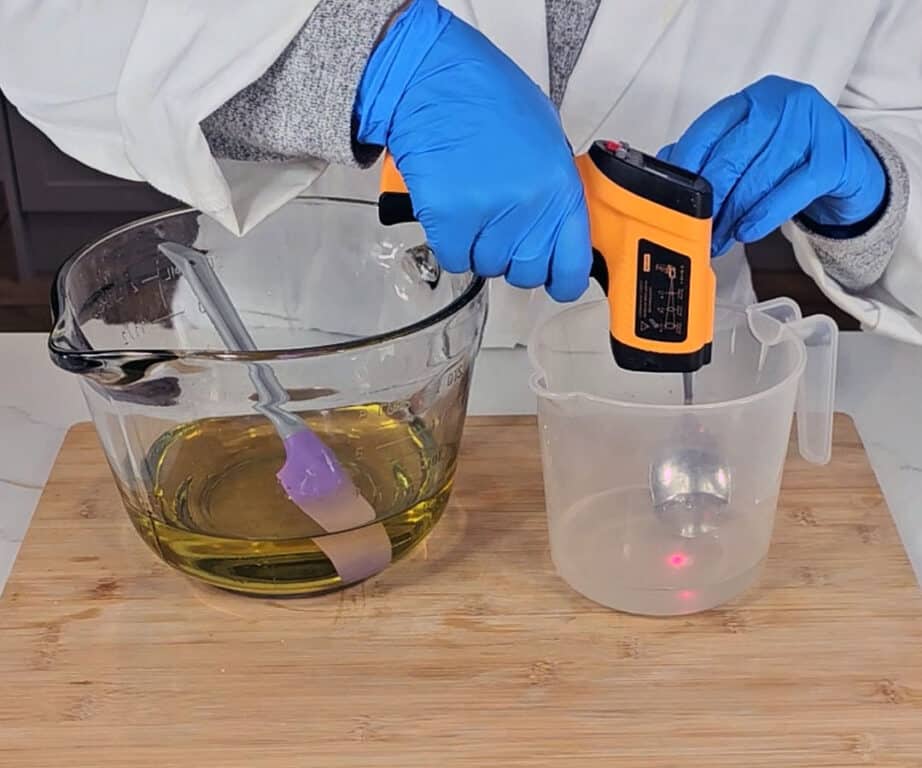
- As the oils cool, add the turmeric powder. Give it a quick blend with the stick blender to help the turmeric disburse into the oils. Mixing the turmeric with the oil before adding the lye is less likely to give spotting of undiluted turmeric.4 tsp Turmeric
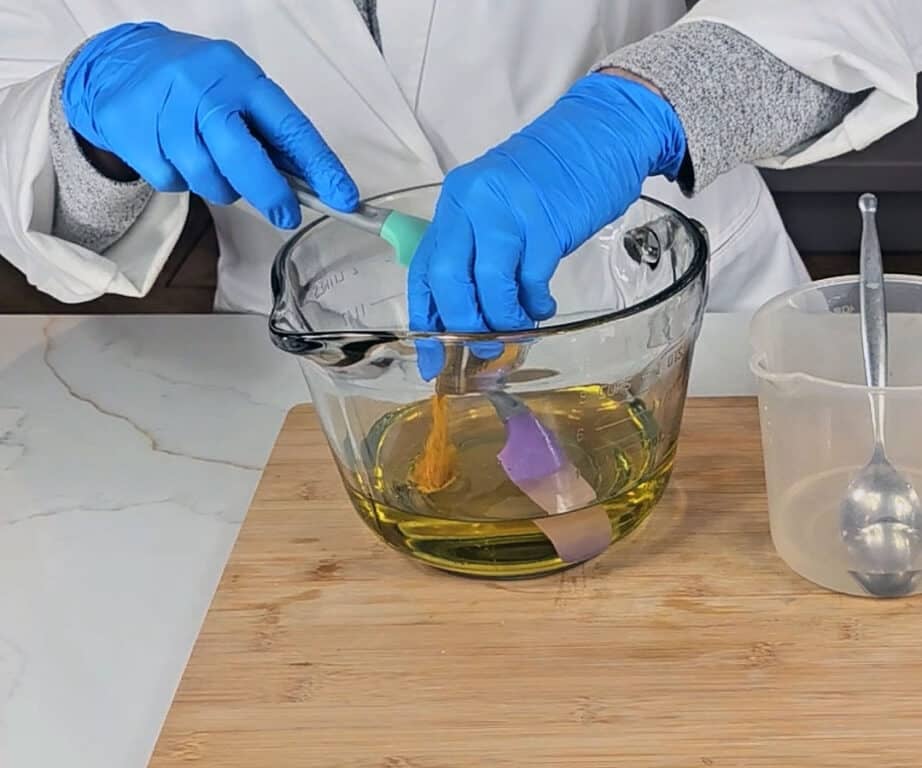
- Once you’re satisfied they’re balanced, pour your lye solution into your oils.
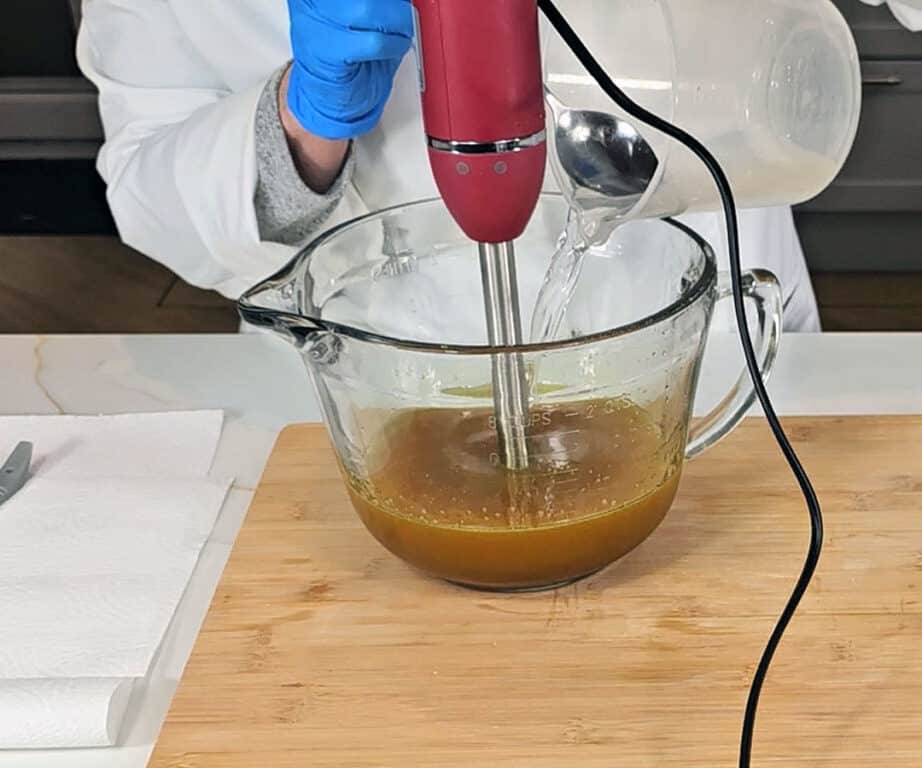
Blending To Trace
- Before turning on the stick blender to mix the oils and lye, gently tap the stick blender against the bottom of your container. Continue tapping until all the air bubbles have been released.Turn the stick blender on and blend until all the oils have been fully emulsified into the lye solution, switch off the blender, and check to see if the soap batter has reached what we call trace. Trace is when you can drizzle a little of the soap over the surface, if it sits on the top, and you can see it before it disappears back into the mix, you have reached trace. If the soap hasn't reached a trace, continue to blend, checking regularly.
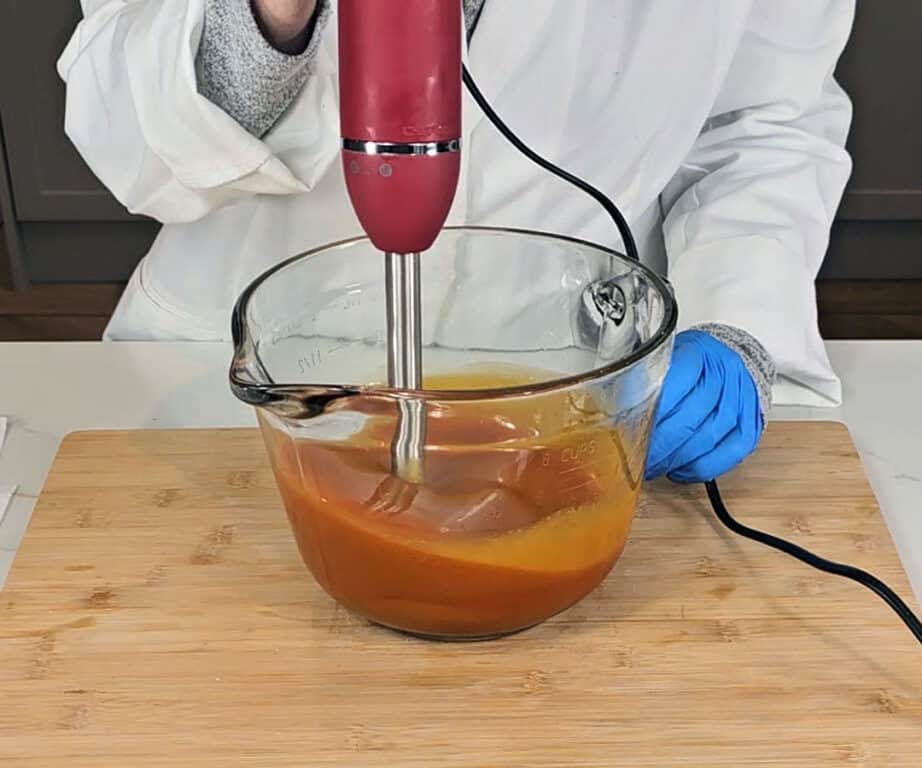
- Now that we’re at trace, it’s time to add our essential oils. I always recommend getting the mold ready before adding the essential oils, as they can sometimes thicken the soap batter, meaning you have to work quickly to get it into the mold.After adding the essential oils, give the soap batter a good stir with the spatula or a few more blasts with the blender to ensure the essential oils are fully dispersed.
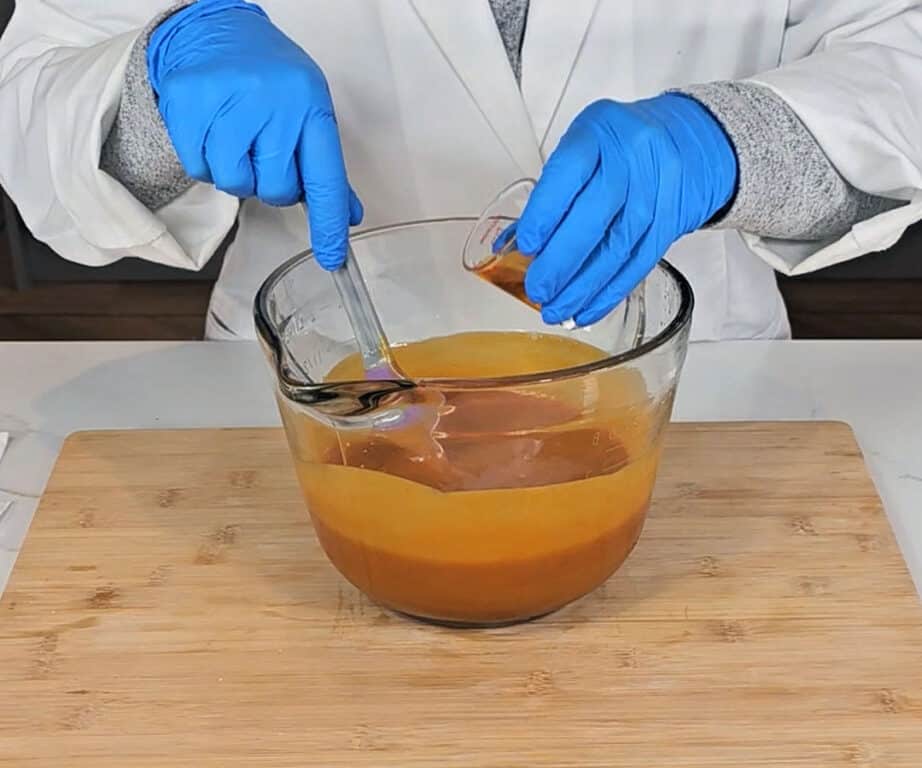
- Once you’ve added the essential oils, you may notice that the soap begins to rapidly thicken. So, working quickly but carefully (as the batter is still caustic), pour or spoon the batter into your loaf mold. Give it a couple of light taps down to even the soap batter out, or use a silicone spatula to level it out if needed.
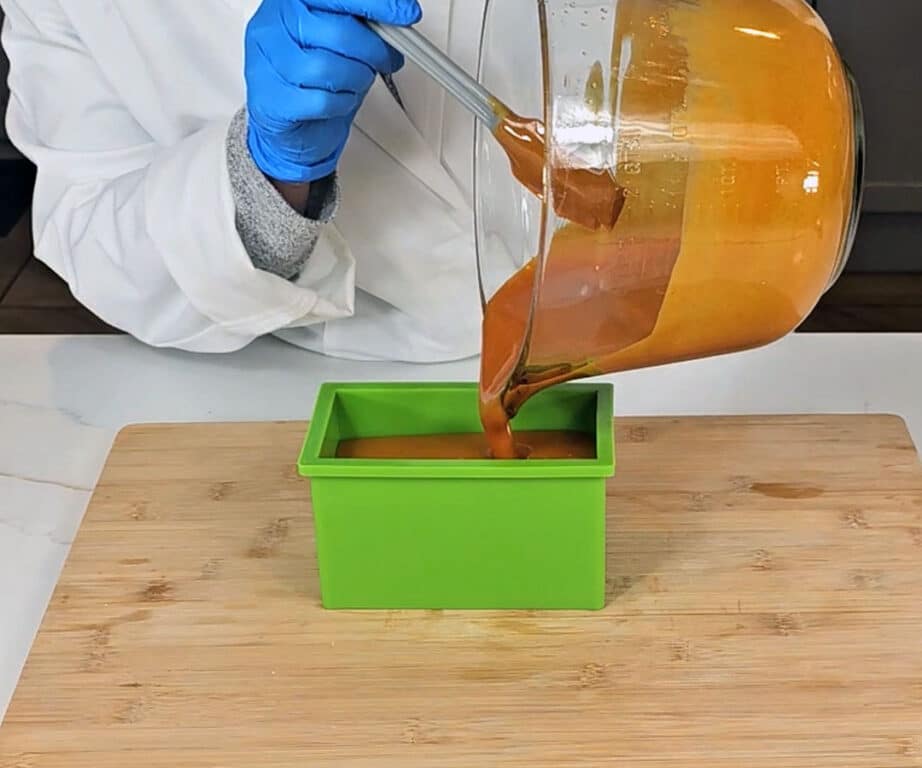
- We now need to leave this to saponify for 24-48 hours before we can remove it from the mold. I like to keep it well insulated during this period, so the gel phase is efficient. I do this by cutting a piece of cardboard to sit on top of the mold and then covering it with an old towel.
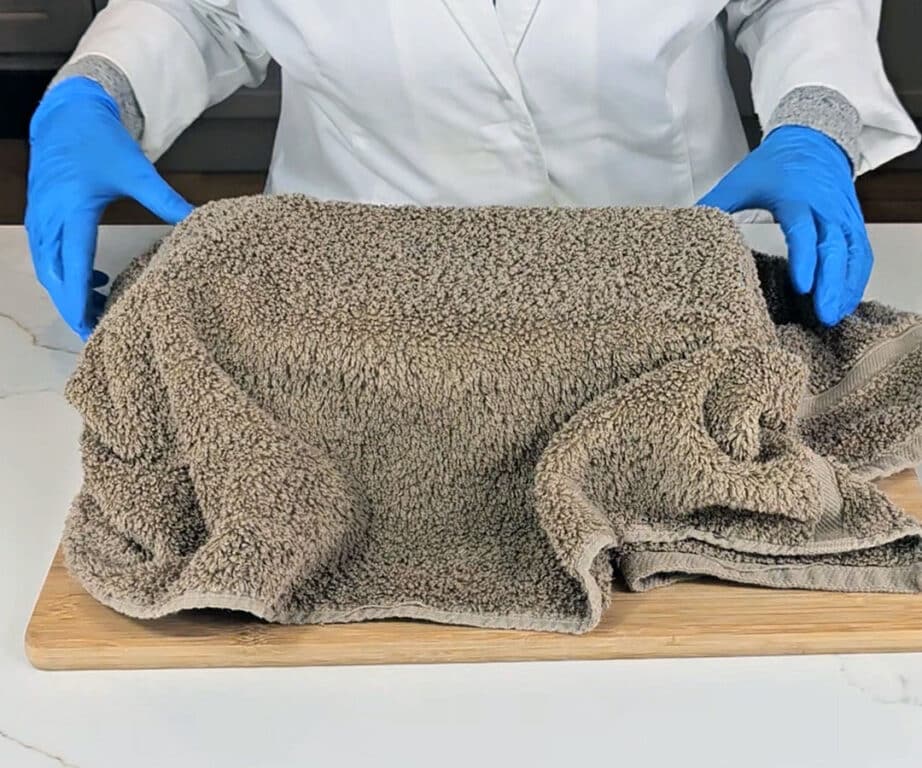
24-48 Hours Later
- Once our soap has fully hardened, and the sides of the mold come away easily from the soap, it’s okay to remove it from the mold.
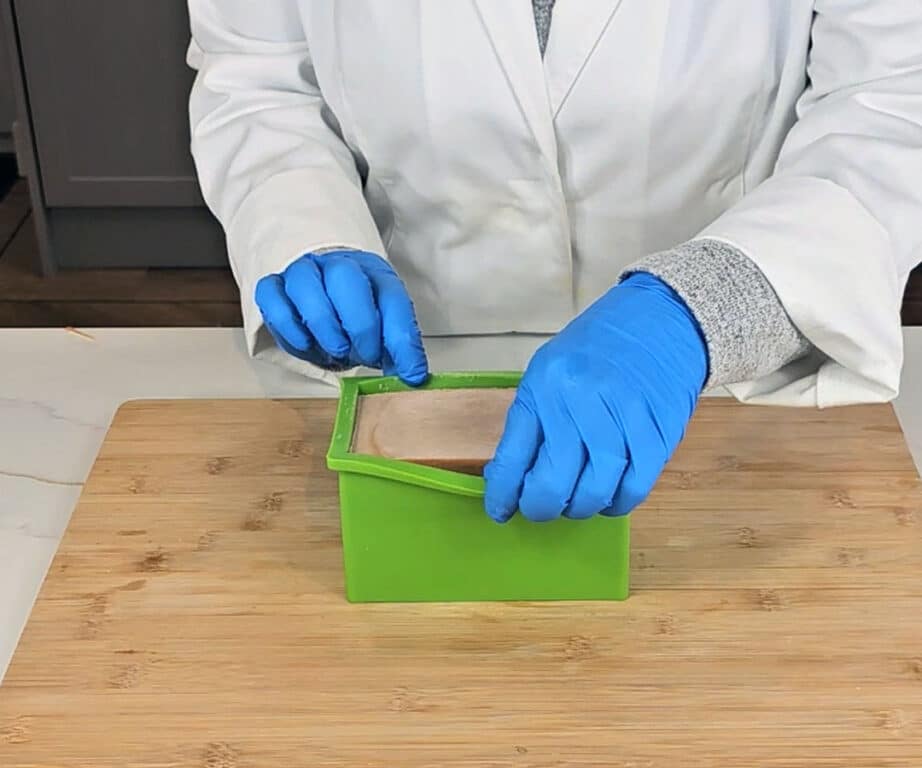
- Cut the soap into bars using a stainless steel knife or a soap cutter. You should be able to get around 5 bars from this batch, depending on the desired thickness.
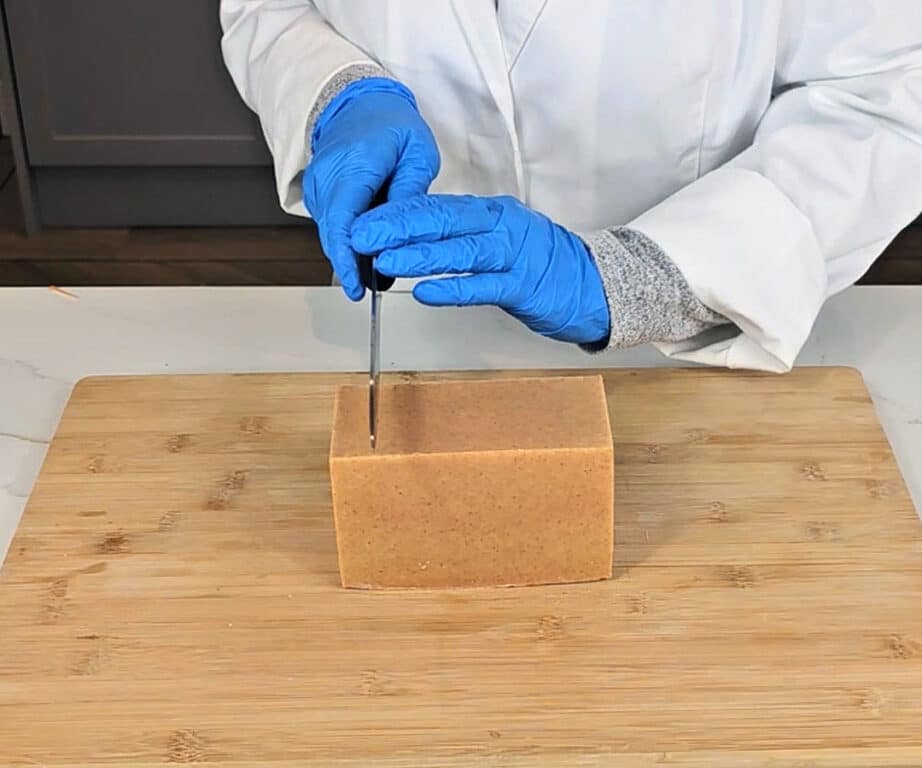
- Leave the soap bars to cure for four weeks in a cool, dry place. Standing the bars up during curing will allow air to flow between them, helping the water to evaporate and giving the soap time to harden. Resulting in a milder, gentler turmeric soap.

Notes:
Please Note: Ingredients are for a 1/2 Loaf Mold
Although I waited for the oils to cool before adding the turmeric I am pretty sure I could have added it earlier, whilst the oils were still warm without losing any benefits.
Turmeric soap will fade slightly so if you don't get the turmeric mixed in enough you could end up with an off-white soap with orange spots.
Tried this projectMention @Savvyhomemade or tag #savvyhomemade!